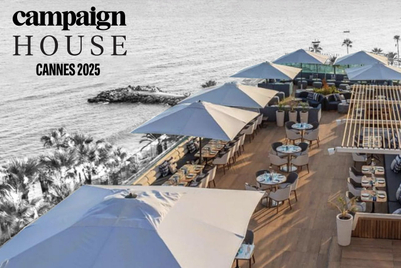
The growing desire of people in Asia to perform at peak efficiency combined with rising health problems from high pollution levels is driving the vitamin and supplement industry to new heights.
The value of the global consumer health market in 2012 stood at US$197 billion, according to a Euromonitor report. Of the regions, top growth between 2007 and 2012 came from Australasia (12.5 per cent) and Asia (10 per cent). In fact, Chinese and Indian consumers are as enthusiastic about supplements as Americans — historical leaders in pill-popping.
Changing lifestyles, health concerns, performance boosting and beauty are among the reasons Asians are turning to supplements.
Besides generic products such as vitamin C pills and multivitamins, consumers are also focusing on purpose-specific products. Japan, for example, has recently seen a shift in the mix of supplements, with a decrease in diet-based products and an increase in lifestyle-related disease prevention and skincare supplements.
Amar Urhekar, EVP for Asia-Pacific at McCann Healthcare WorldWide, says increasing awareness of lifestyle-related diseases and in particular metabolic syndrome disorders — called ‘metabo’ in Japan — is driving this change. The term ‘metabo’ has entered the vernacular and has contributed to the shift in mindset from treatment to prevention.
Air pollution, especially in China and Hong Kong, and haze from forest fires in Southeast Asia has also increased the use of supplements such as antioxidant-rich Vitamin E pills. For example, Well 3 Complete E in Indonesia claims to protect the skin against pollution, resulting in healthier and fresher looking skin.
Share of vitamins/supplement sales in Asia-Pacific
|
Top marketers of supplements in Asia are the direct-selling companies, with Amway the leader with its market share of 9.7 per cent in 2012, ahead of Taisho Pharmaceutical and Miki at 4.1 per cent and 2.3 per cent, respectively.
Euromonitor theorises in its report that direct selling’s domination is due to the relationships and personal recommendations buyers have with sellers. That, combined with ‘exclusive access’ and the seller’s guarantee of quality, keeps people buying.
Urhekar says people are more aware of the need to stay healthy and to be seen as healthy, which has pushed up the numbers of gym membership and running events.
“Vitamins now provide the counterbalance and supplement increasingly aware, informed and empowered consumers,” he says. “Both the aging and the young are driving and shaping this trend, be it for self-preservation and longevity or to improve, boost and develop.”
Asia’s aging population is also fuelling the trend. Japan, Korea, Hong Kong, Singapore and even China are markets where people are living longer and having fewer children.
The traditional market has also reinvented itself in terms of packaging, product format and even retail space. One of the most successful at this is Eu Yan Sang, which combines traditional remedies with ready-to-go packaging.
“While Western brands are talking efficacy, traditional ones are riding high on safety. There’s enough room for them to coexist,” Urhekar says.
EXPERT OPINION Market to retain high-value vitamin consumers
Andrew Crombie, managing director, H&T Asia, part of The Healthy Thinking Group
 Asians have long believed in functional nutrition, recognising that even a balanced diet, should be supplemented with specific nutrients. We have seen this belief in the adoption of functional foods such as in infant and senior nutrition, where Asia is well ahead of world trends.
Asians have long believed in functional nutrition, recognising that even a balanced diet, should be supplemented with specific nutrients. We have seen this belief in the adoption of functional foods such as in infant and senior nutrition, where Asia is well ahead of world trends.
This category is showing signs of being a very aggressive one, with all avenues pursued to identify and retain customers, as their potential lifetime value is high.
This bodes well for the advertising and marketing services community.
The Asian vitamin and supplements market is estimated to expand rapidly from six per cent to 18 per cent a year for the next five years at least.
This growth is driven by: increasing wealth and education; the shift towards 24/7 preventive healthcare rather than reactive medical care; growing urbanisation; aging populations and the growing emphasis on personal health and wellness as people realise they need to prepare for longer life expectancies.
Of course, a huge influence is the increase in China of the use of ‘Western’ supplements, modernising their traditional preference for preventive healthcare by seeking more ‘scientifically validated’ products.
One area I expect will evolve in coming years will be the growing cross-usage of modern supplements by young Asians to meet their specific health-care needs and beliefs, without any sense of contradiction.
The question is whether a single brand can ever span the two camps with any real credibility.



.jpg&h=334&w=500&q=100&v=20250320&c=1)

+(900+x+600+px)+(3).png&h=334&w=500&q=100&v=20250320&c=1)




.jpg&h=334&w=500&q=100&v=20250320&c=1)


+1.jpg&h=268&w=401&q=100&v=20250320&c=1)



.jpg&h=268&w=401&q=100&v=20250320&c=1)

